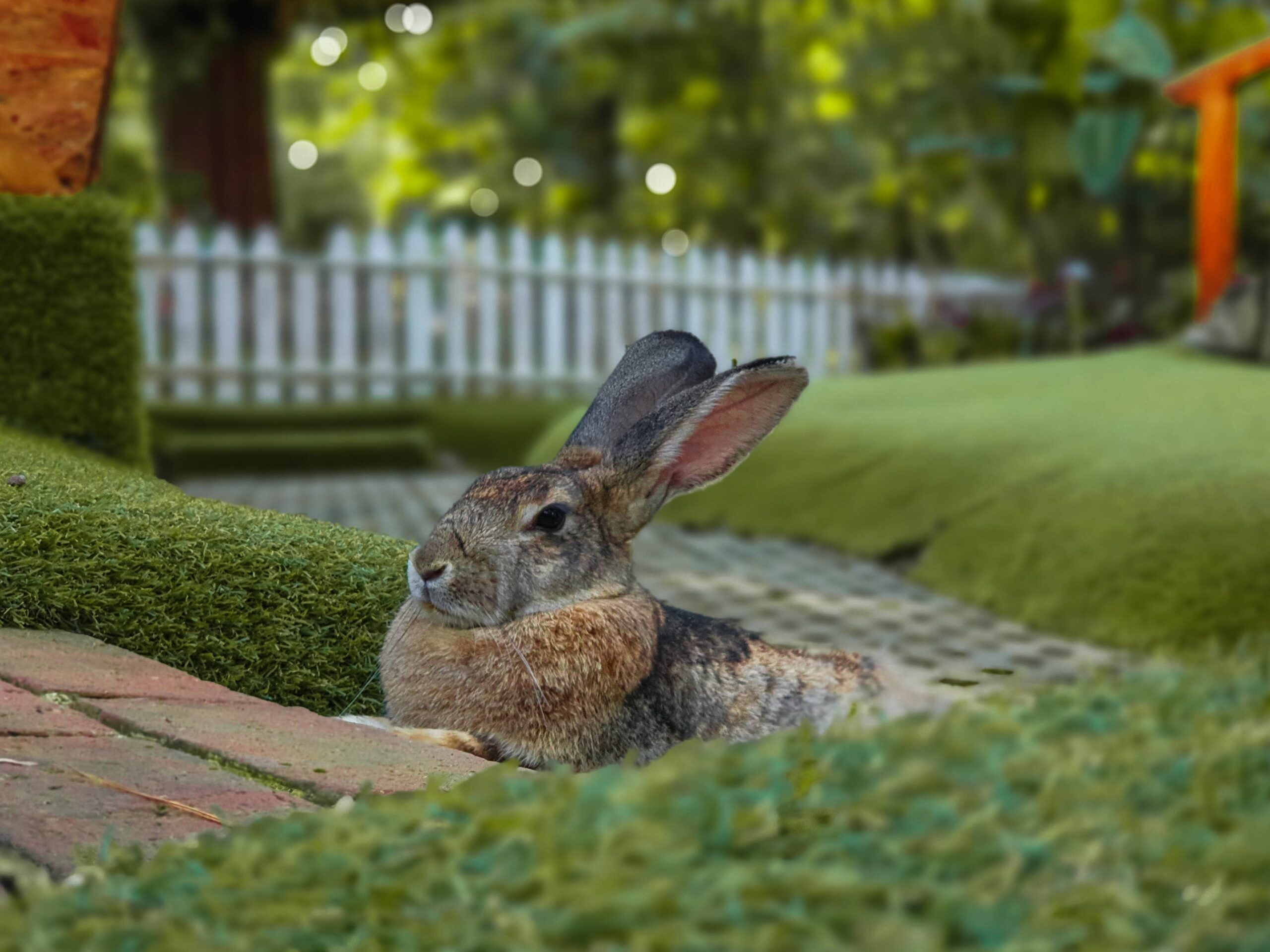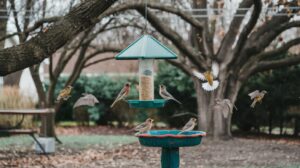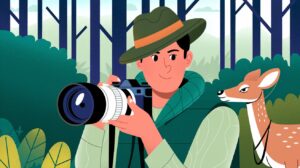Oh boy, do I have a fun backyard project for you nature lovers out there! Get those binoculars dusted off because we’re going on a wildlife scavenger hunt. That’s right, a scavenger hunt for cool critters right in your own backyard! Squirrels and birds are old news. I want you peeking under logs and gazing up trees to spot some of the more elusive local species that share our neighborhoods.
With my handy local animal identification guide, you’ll be an expert in no time. Colorful photos, fun facts, tracks, and signs – I’ve crammed it all in here. Let’s see how many fascinating furry and feathered friends we can find! Don’t worry, no need to touch or disturb them, just observe. Now grab your hiking boots and let’s see what amazing animals are waiting to be discovered in our midst! Who’s ready to become a backyard naturalist? This is going to be awesome!
Backyard Wildlife You Might Encounter and How to Identify Them
Look around you – nature is all around, even in your own backyard! There are so many fascinating creatures that inhabit our outdoor spaces. As an amateur naturalist, I love spotting wildlife in my yard and learning how to properly identify them.
Some common animals you may encounter are birds, rabbits, squirrels, insects, and reptiles. Personally, I get really excited when I spot colorful birds visiting my bird feeder or birdbath. There are many types of birds you can attract by offering food, water, and shelter in your yard. I often see cardinals, blue jays, finches and chickadees flocking to my yard. Watch for their distinctive markings, colors, and calls to determine the species.
You may also spot rabbits hopping around, especially in the early morning or evening. Look for their fluffy white tails, long ears, and quick, bounding leaps. Squirrels are other frequent visitors in many yards, scurrying up trees and around bird feeders. They have bushy tails, and nimble paws and make a chattering sound.
Insects abound in most yards, especially in the warmer months. Watch for butterflies gently fluttering by, like monarchs, swallowtails or painted ladies. You may also see dragonflies zipping around, fireflies glowing at night, or bees and spiders busily spinning webs and collecting pollen.
On lucky occasions, you might spot turtles sunbathing, snakes slithering through the grass, or even deer walking through. Always give wildlife plenty of space and never approach or corner wild animals, especially if with their young.
By providing food, water, and shelter and maintaining a natural yard, you’ll attract a variety of fascinating wildlife visitors. Spend time observing the animals in your backyard and enjoy discovering nature’s wonders right outside your door!
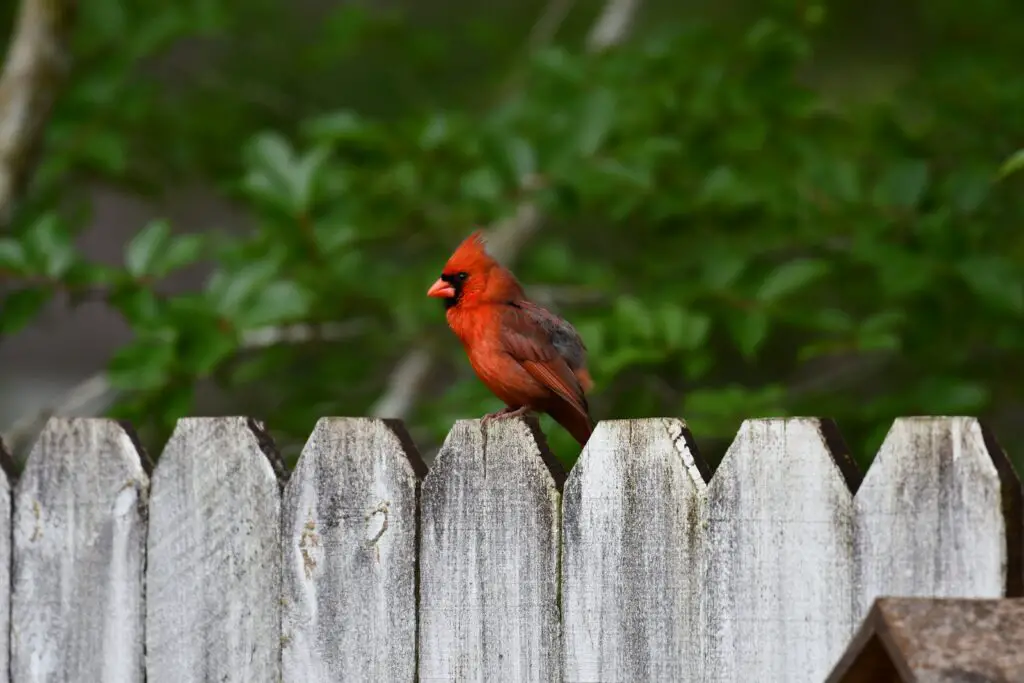
Creating a Backyard Habitat to Welcome Local Wildlife
As an animal lover, one of my favorite hobbies is attracting local wildlife to my backyard. By providing food, water, shelter and a place to raise their young, you can transform your yard into a habitat for nature’s creatures.
The first step is to plant native trees, shrubs, and flowers which provide food and shelter. I have oak, maple and dogwood trees that offer acorns and seeds for birds and small mammals. Azaleas, hollies, and junipers supply berries and foliage for hiding spots. A variety of native wildflowers like coneflowers, asters, sunflowers and milkweed attract pollinators like butterflies, bees, and hummingbirds.
Add a water feature such as a bird bath, fountain or small pond. Many animals need access to fresh water, and the sound of running water will draw them in. Place a few large stones in shallow water so butterflies and bees have a place to perch while drinking. Change the water frequently and provide a heater in winter to prevent freezing.
Leave natural debris like fallen logs, leaf litter, and brush piles which create habitat for insects, snakes, turtles, frogs, lizards and small mammals. This also provides shelter and nesting spots for birds. Resist the urge to do a total fall cleanup of your yard – leave some areas untouched.
Supplement their diet by providing birdseed, nuts, and mealworms. I frequently fill my bird feeders with a variety of seeds, and place platform feeders on the ground with nuts, fruits and mealworms for ground-feeding birds and small animals. Be sure to do research on the specific diets of local wildlife before offering food.
Creating the ideal habitat may take time, but the rewards of attracting nature to your backyard are well worth the effort. Observing colorful birds, fluttering butterflies, and other fascinating creatures in their natural environment will bring you joy for years to come. By nurturing local wildlife, you’ll be giving back to the natural world that sustains us.
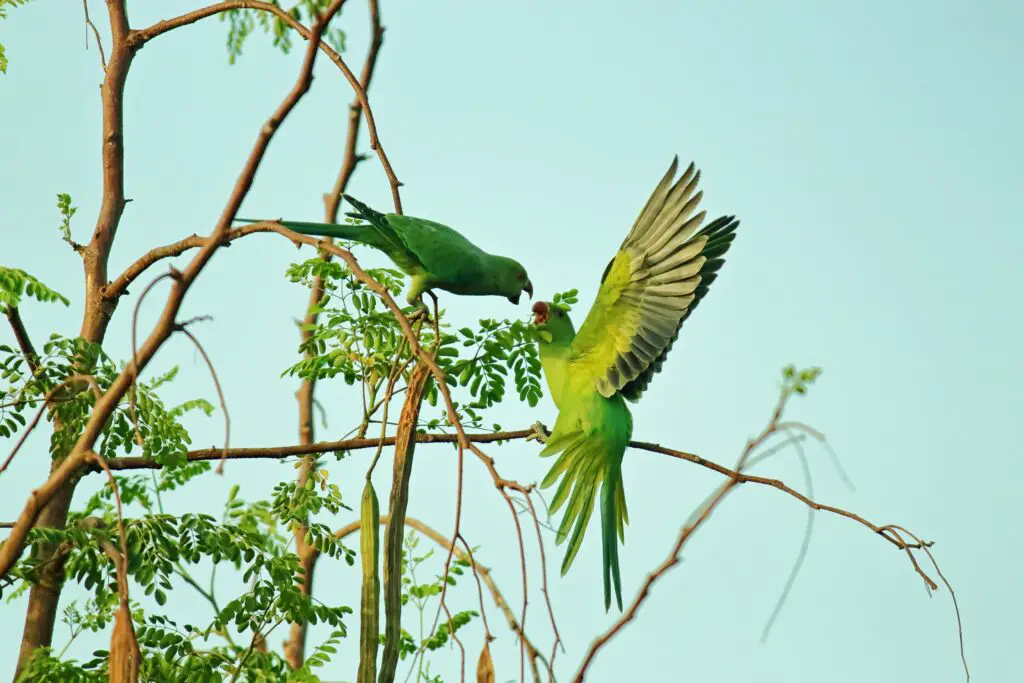
Common Backyard Animals – Birds, Squirrels, Rabbits and More
One of my favorite things about having a backyard is all the local wildlife it attracts! I love sitting outside with a cup of coffee in the morning and seeing who comes to visit. The most common animals you’ll spot are birds, squirrels, rabbits, and chipmunks.
Birds
There are so many types of birds that frequent my yard. Colorful cardinals, noisy blue jays, cheerful chickadees and adorable tufted titmice are daily visitors to my bird feeder. In the spring and summer, I also see robins, sparrows and the occasional woodpecker. Providing birdseed, nuts and a source of water will make your yard a haven for local birds.
Squirrels
Squirrels are so entertaining to watch, with their bushy tails and acrobatic climbing skills. The most common types are eastern gray squirrels and fox squirrels. They love munching on nuts, seeds, fruits, fungi, insects, bird eggs and pretty much anything else they can get their little paws on. I keep my bird feeder well-stocked with peanuts in the shell, which the squirrels also enjoy.
Rabbits
If you have open spaces in your yard with grass, you’ll probably spot an eastern cottontail rabbit or two. They tend to feed at dawn and dusk, munching on clover, dandelions, leafy weeds and garden plants. Rabbits are adorable to observe from a distance, but you’ll want to protect any gardens or landscaping from becoming their dinner! Fencing them out or using motion-activated sprinklers are good deterrents.
Chipmunks
The small striped chipmunks in my area build underground burrows and emerge to gather nuts, seeds, fruits, insects, worms, and other invertebrates. They stuff their chubby cheeks full of food to carry back to their burrows. Chipmunks tend to be shy, but with patience you may be able to hand-feed these adorable little creatures.
Welcoming wildlife to your backyard can be very rewarding. With the right environment and snacks, your home may become a popular spot for your neighborhood birds, squirrels, rabbits and chipmunks! Observing nature up close is a simple pleasure that never gets old.
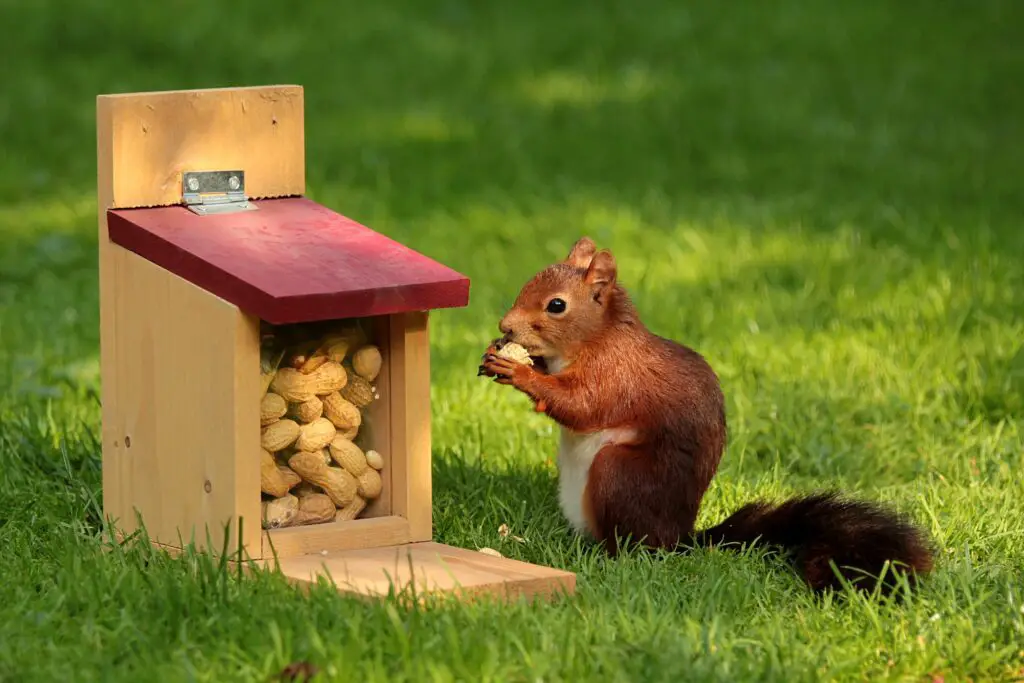
Backyard Wildlife Behavior Explained – What Are They Doing and Why?
I love observing the animals that visit my backyard! Their behaviors are so fascinating. Here are some of the common things I see the local wildlife doing and why.
The birds are always busy building nests and feeding their babies in the spring. The males will sing beautiful songs and do elaborate displays to attract a mate. Once paired up, the happy couple works together to construct a nest, usually made of twigs, leaves and feathers.
The female lays eggs, which both parents take turns incubating. After the babies hatch, the parents make frequent trips to bring food back to the nest. It’s amazing how much those little hatchlings can eat!
Squirrels are constantly on the move, searching for and burying nuts to save for winter. They can stash up to 10,000 nuts a year! I see squirrels performing aerial acrobatics, jumping from tree to tree. They use their bushy tail for balance and to steer and spring from branch to branch. Squirrels are very territorial and chase each other around, especially males defending their turf.
Deer often wander through, foraging on plants, bark and leaves. The does (females) tend to travel in small family groups with their fawns (babies). Bucks (males) are usually solitary or travel in bachelor herds. Mating season, known as the rut, is when bucks battle each other, locking antlers to compete for does. They also scrape marks in the ground, rub their antlers on trees, and emit a musky scent to attract mates.
By understanding why animals behave in certain ways, I’ve developed a deeper connection with and appreciation for my wild neighbors. Their antics never cease to entertain and inspire. I feel lucky to witness nature’s theater in action!
Backyard Wildlife FAQs – Answering Your Common Questions
Ever wonder what kind of animals are visiting your backyard or local park? I know I do! As someone fascinated by nature and wildlife, I’m always trying to identify the critters I spot outside. Here are some of the most frequently asked questions I get about local wildlife.
What are some common animals I might see?
There are lots of animals you can spot right in your own backyard! Some frequent visitors include:
- Birds – sparrows, robins, chickadees, jays, etc.
- Squirrels – both gray squirrels and red squirrels
- Rabbits
- Raccoons
- Opossums
- Chipmunks
- Frogs and toads
- Butterflies and other insects
- Snakes – most are harmless to humans and help control the rodent population!
How can I attract more wildlife to my yard?
If you want to invite more animals over for a visit, try:
- Providing food sources like bird feeders, suet cakes, and nuts.
- Adding a water feature such as a birdbath. Animals need to drink too!
- Planting native trees, shrubs, and flowers which provide shelter and food.
- Limiting or eliminating the use of pesticides in your yard.
- Putting up nesting boxes for birds, bats, and other animals.
- Leaving deadwood, brush piles, and leaf litter which provide habitat for many creatures.
What are some tips for observing wildlife in my area?
Here are some tips for getting the best views of animals near you:
- Be quiet and move slowly. Loud noises and sudden movements will scare most wildlife away.
- Wear natural-colored clothing that blends into your surroundings.
- Get up early. Many animals are most active at dawn and dusk.
- Use binoculars or a camera with a zoom lens. This allows you to observe animals from a distance without disturbing them.
- Look for signs like tracks, scat, feathers, or chewed nuts/cones. Even if you don’t spot the animal itself, you’ll know it was there!
- Do some research on native species in your area so you know what to look out for. The more you learn, the more fascinating nature becomes!
Observing and learning about the wildlife in my own community has given me a profound appreciation for the nature that surrounds us each and every day. I hope these tips help you discover the amazing animals in your own neighborhood! Let me know if you have any other questions.
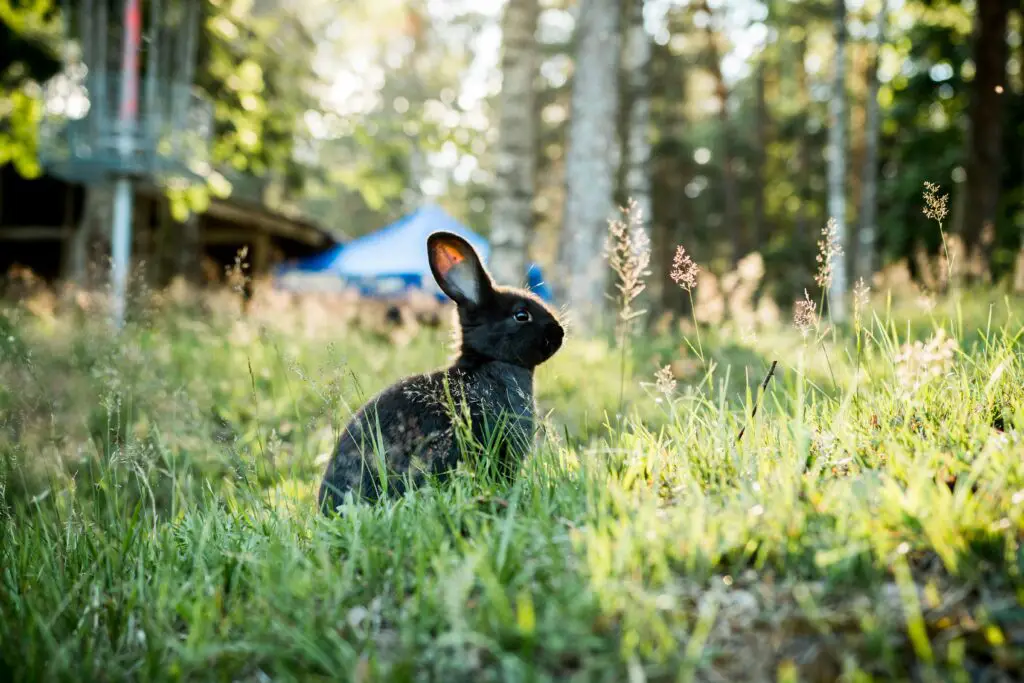
Conclusion
As you can see, there’s so much delightful wildlife right in our own backyards if we take the time to look around! Getting to know these furry and feathered friends has brought me endless joy and made me feel more connected with nature. I hope this little guide helps you identify some of the amazing animals nearby and inspires you to create a welcoming habitat for them. Just seeing a curious rabbit or listening to birds chirp happily from a homemade birdhouse fills my heart with optimism. Our animal neighbors, no matter how small, make the world brighter. I can’t wait to see what wonderful wildlife you might discover in your backyard!

